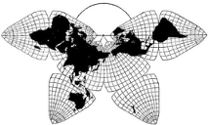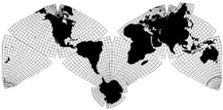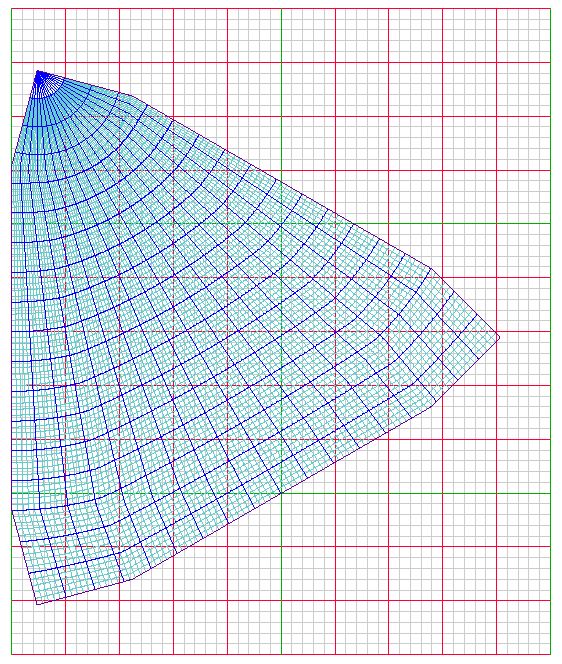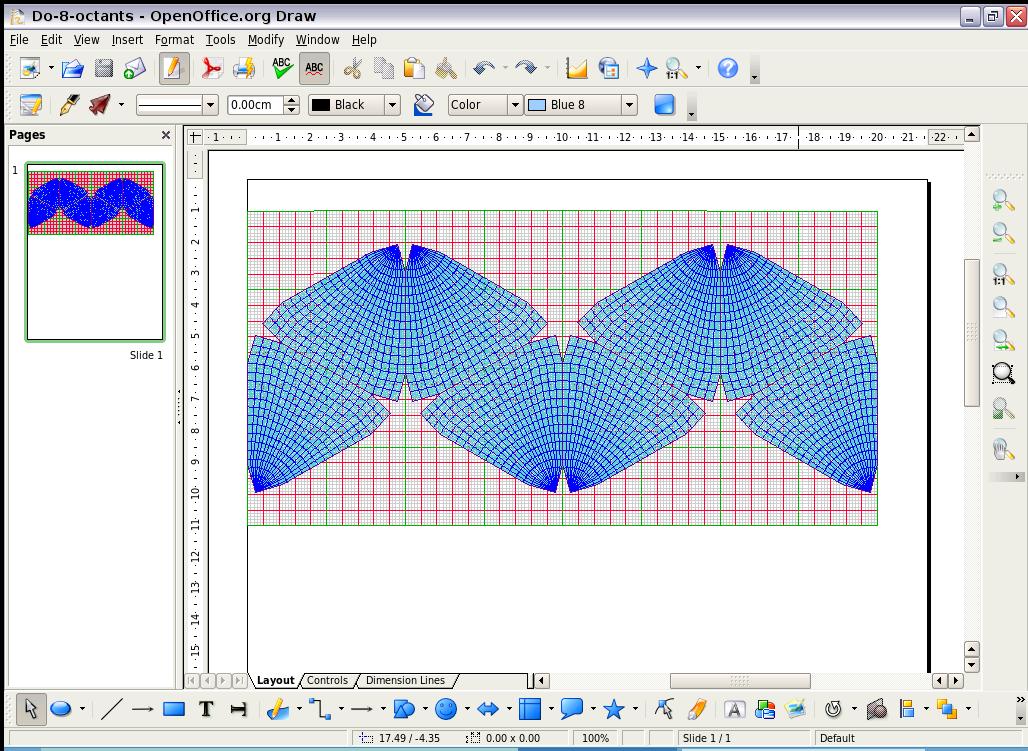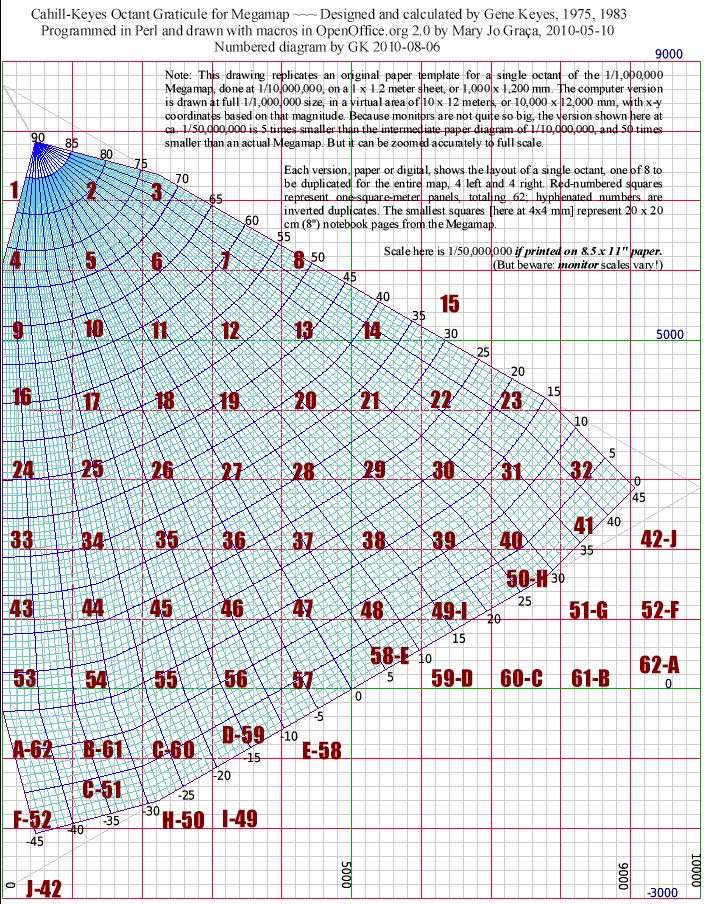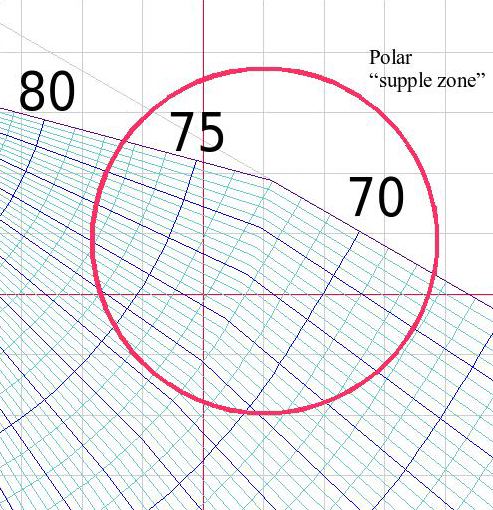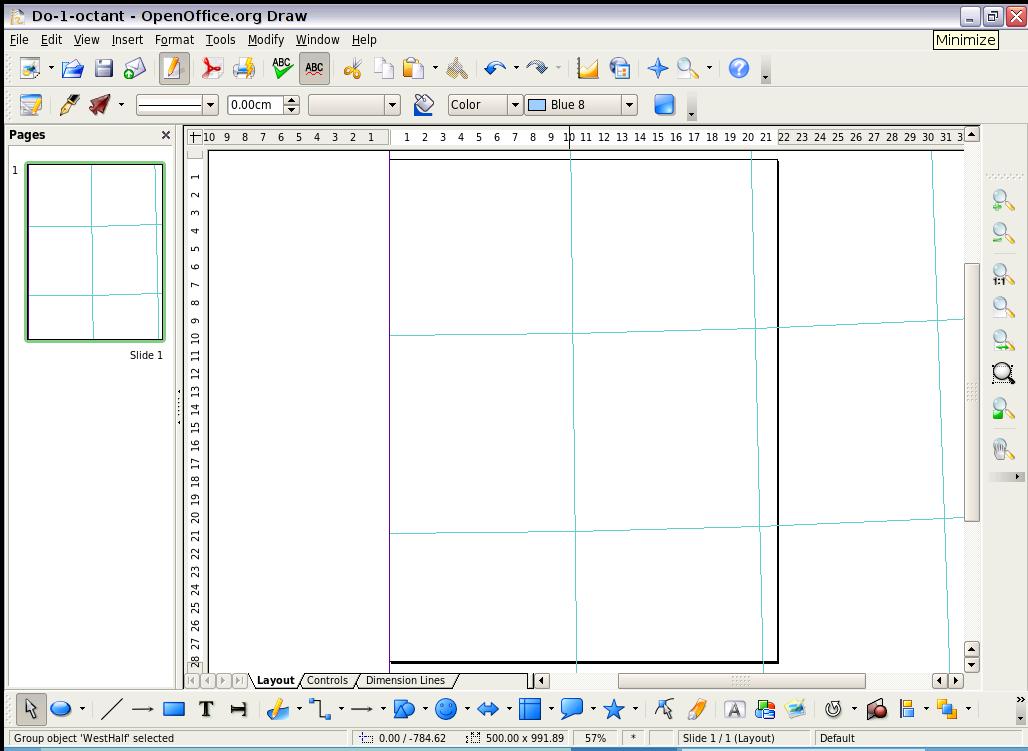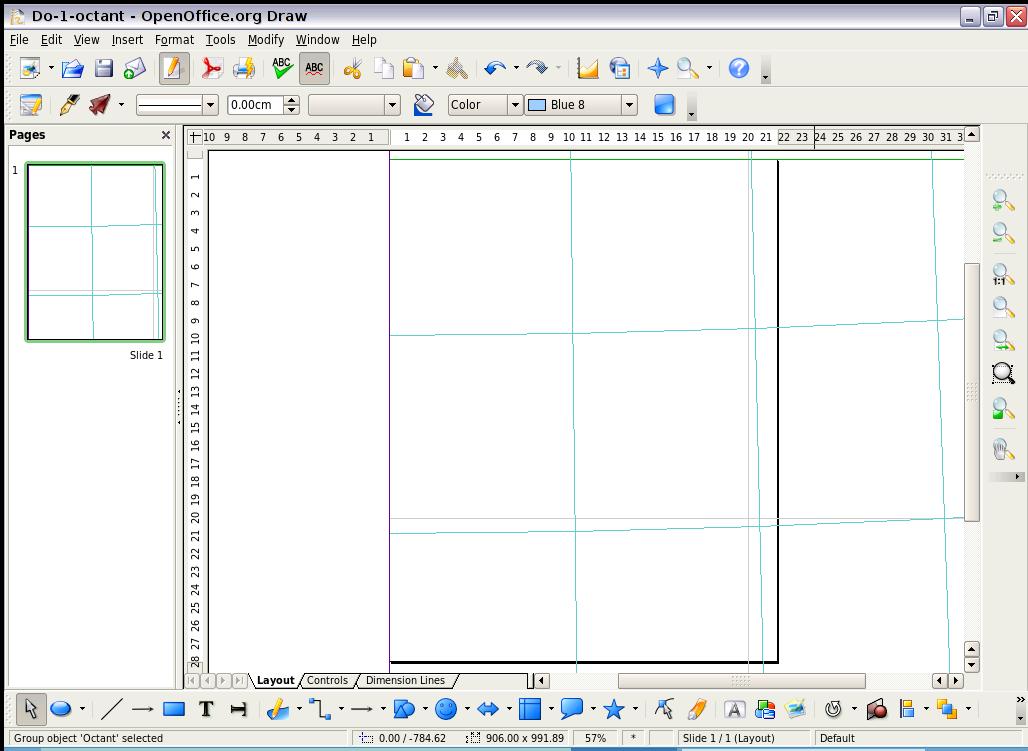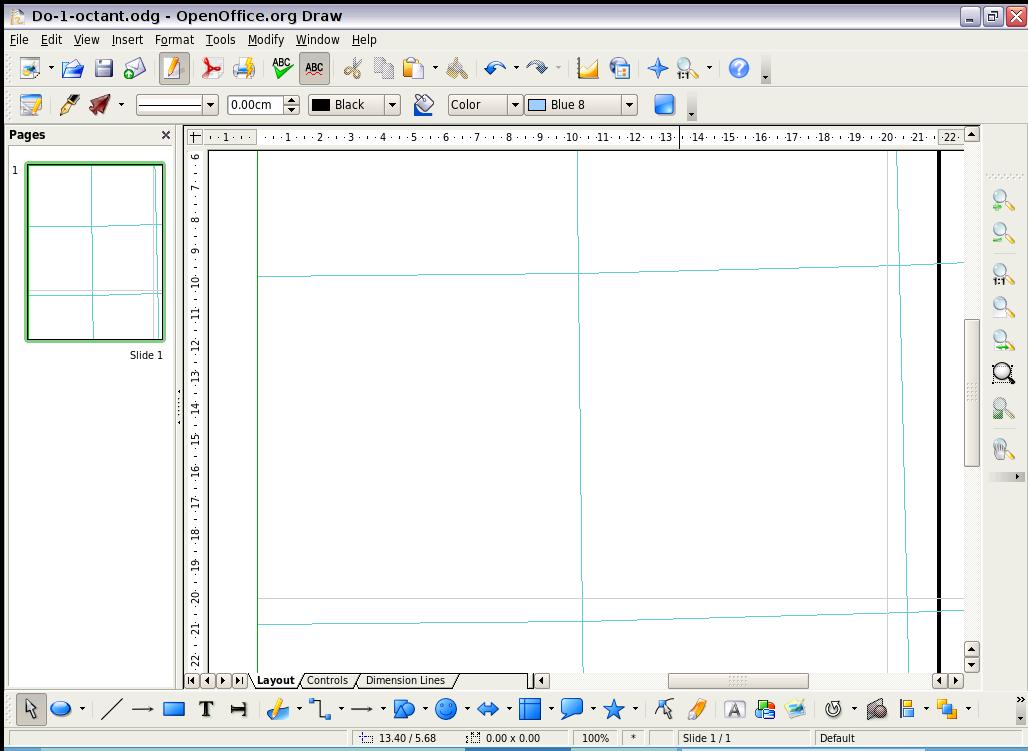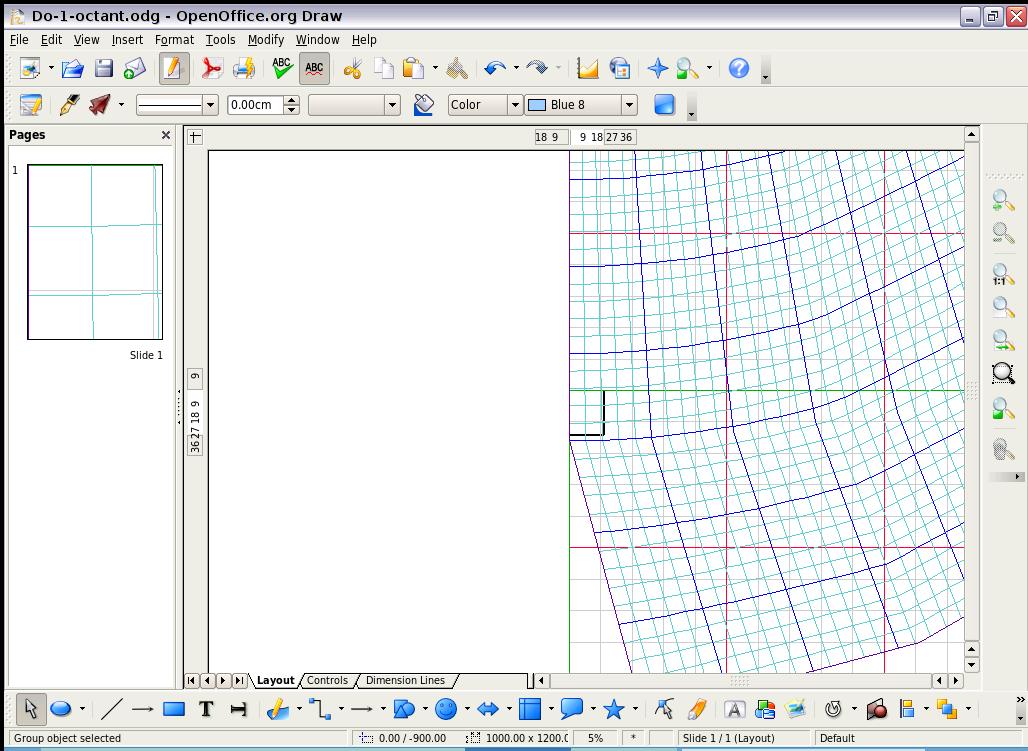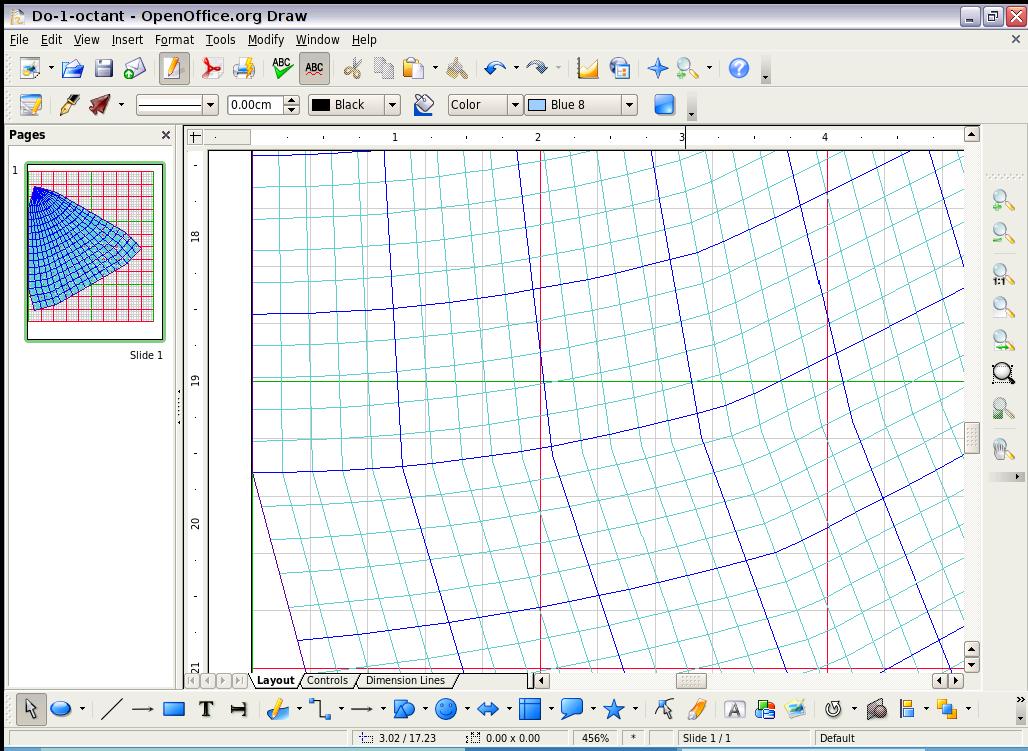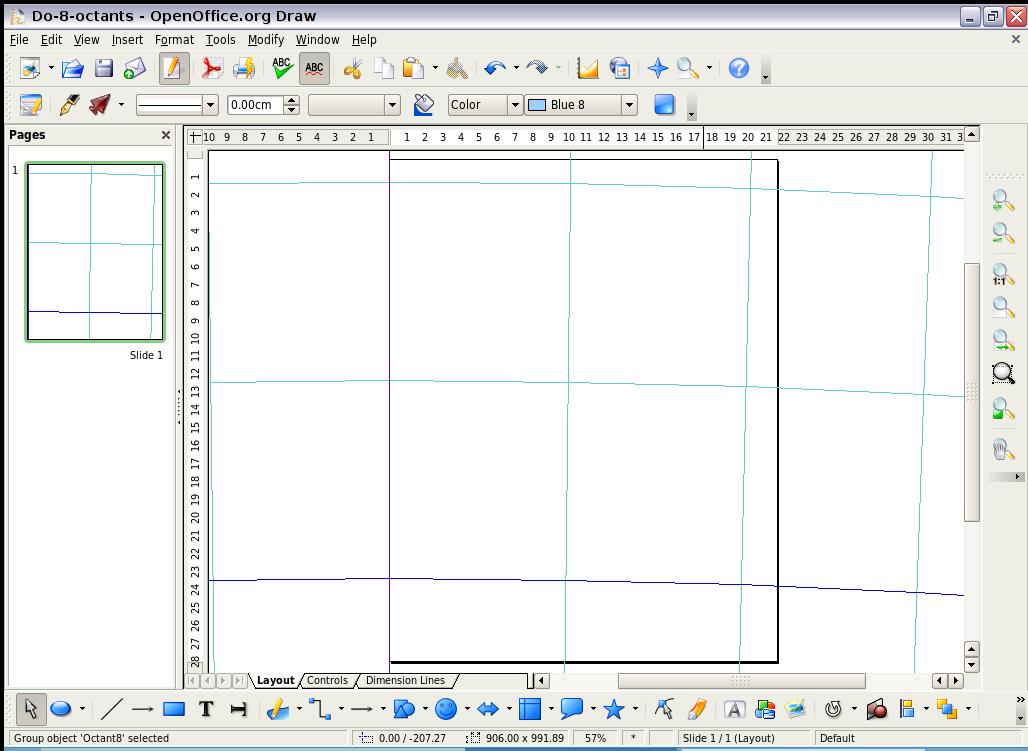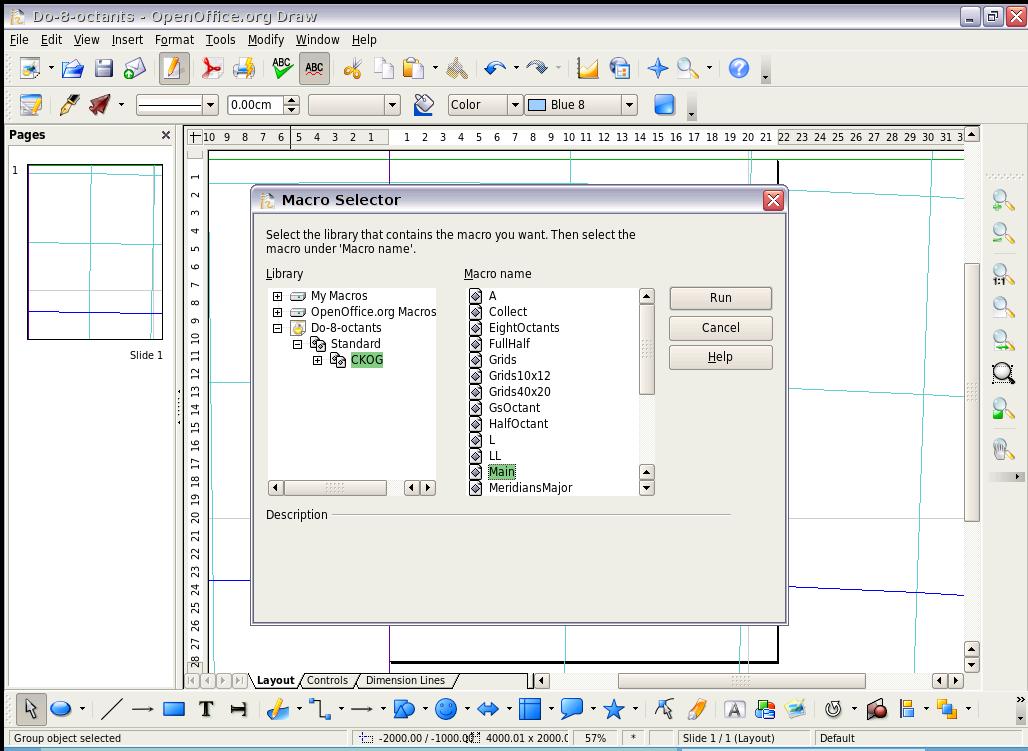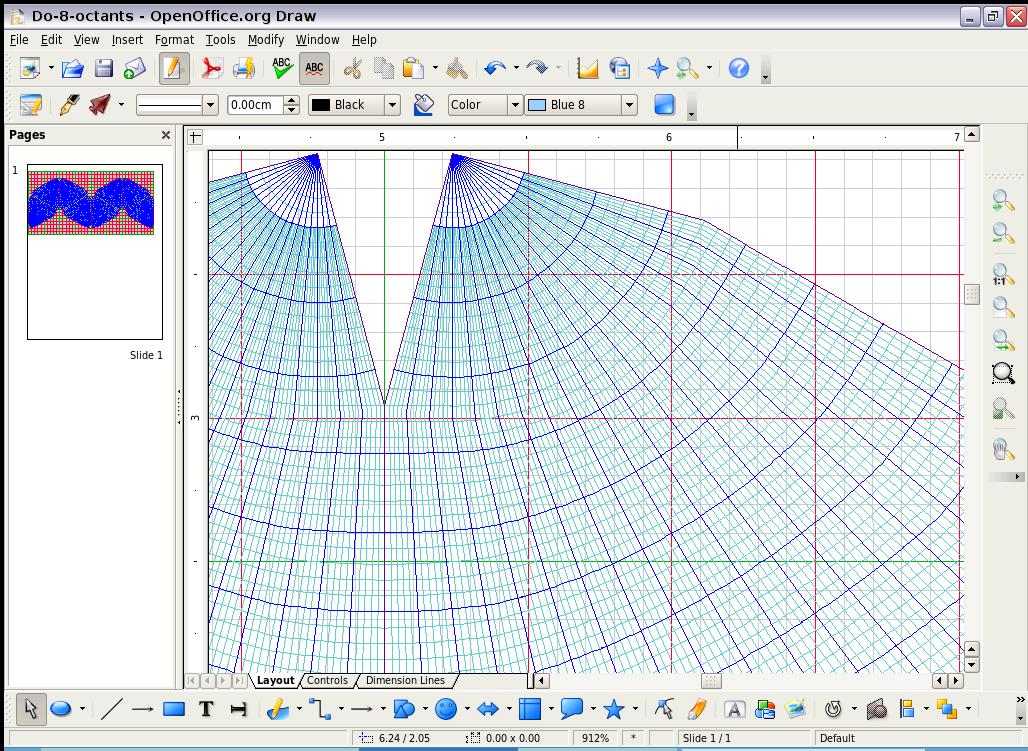Among my
Ten
Principles for a Coherent World Map System is that the 1/1,000,000
Master World Profile, the Megamap, be inscribed exactly within a grid
whose length is 40,000 mm [= km], representing the earth’s circumference.
(The grid can be square, 40 x 40 m, or rectangular, 40 x 20 m; see
Note below.) Mary Jo's macros integrate this grid principle with the Octant
Graticule itself..
At any scale in the System, the map is shown within a
specified progression of grid-squares. For instance, when the map
is seen filling a notebook-size 8-inch square frame (200 x 200 mm),
it is designated Scale 1, Size 1; its l-mm grid represents 200 km per
mm; and the scale is 1/200,000,000. (This is the scale I used in my
gallery of Cahill and similar maps.)
The entire kilometer grid is accented by three colors
of sub-squares:
(1) the largest, with
green lines comprising 5,000
x 5,000 km each; in turn divided by five for the next largest squares:
(2) with major lines in
red comprising 1,000 x
1,000 km each, and then divided by 5 again for the smallest squares
(3) within the major ones, having
light grey lines,
200 x 200 km each.
At 1/200,000,000, the smallest (light grey) square is 1 millimeter.
At 1/1,000,000, the size of that smallest square (light grey) has dilated
to 200 x 200 mm (= km), and could now show a new intervening grid
of 1 mm, to represent 1 square kilometer each. As of this writing,
the macros have not been extended to scales beyond 1/1,000,000, but
the intent and principle is there, to do portions of the Cahill-Keyes
map up to at least 1/5,000. (See "Ten Principles...")
In other words:
- Until it reaches the scale of 1/1,000,000, the
smallest (light grey line) squares in any Cahill-Keyes map represent
200 x 200 km.
- The next larger accented squares, red-line,
represent 1,000 x 1,000 km. (The red lines also represent the 1-square
meter panels of the Megamap as diagrammed in Fig. 9 below
and shown in the photos
of the hand drawn test panels.)
- The largest accented sub-assembly of squares,
marked with green lines, is 5,000 x 5,000 km, of which
there are 4 x 4 per four-octant set, or 4 x 8 if in a rectangular frame
for the full eight-octant world map, spanning 40,000 km, Q.E.D.
Note: A full 40 x 40 m square could have extra graphics such as counterpart
global images, but where wall or floor space is limited, a 40
x 20 "double-square" frame includes the entire Cahill-Keyes map. Although
the System is based on square frames, the third column in the table
below shows the length of such rectangular "double squares" to accomodate
the 40,000 km span of the M-shape Master Profile, and the last three
columns show the length of sub-squares within the main frame.at specified
scales.
